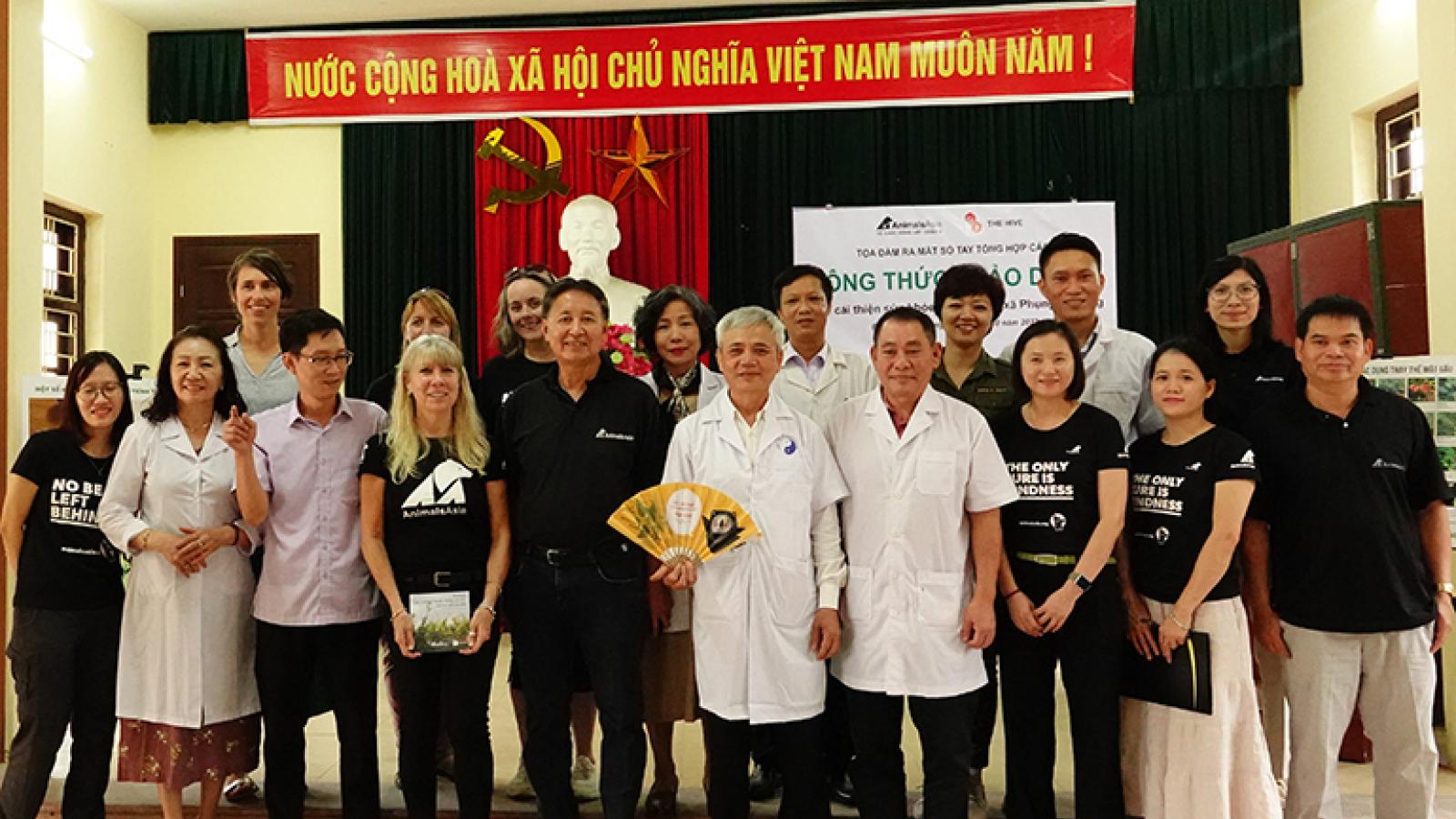To the casual observer, the Hive (formally The Rick and Susan Sontag Center for Collaborative Creativity) is a fun place on campus to make buttons and posters or attend classes on sewing and printmaking. But it’s also an active complex where students in various programs and academic classes seek to solve real-world problems both locally and globally using principles of human-centered design, a problem-solving technique that focuses on the needs of users.
The Hive’s Summer Design Fellowship Program is one of many avenues for students at the Claremont Colleges to apply methods of human-centered design. The Vietnam Health Design Program was one of those summer ventures, and last month students and staff who were part of that program saw their work come to fruition through a book launch in Vietnam that was covered by Vietnamese national media.
The book, Herbal Recipes for Health Improvement, is a compilation of herbal remedies created by women in northern Vietnam and curated by Claremont Colleges students. In this “collective piece of living history, women share sustainable health knowledge passed down from mothers and grandmothers,” says Shannon Randolph, director of global social impact at the Hive.
Phase 1: Inspiration
The first step in human-centered design involves empathetic listening to understand peoples’ needs.
Randolph, who holds a Ph.D. in anthropology, traveled to Vietnam in 2017 to help the non-profit organization Animals Asia explore people’s attitudes towards using bear bile as medicine to treat joint pain, inflammation and gallstones.
“Bear bile farming poses a humane treatment issue as well as a conservation issue because bears are continuously captured from the wild, so the practice is depleting the bear population,” Randolph says. “There are also human health issues of contaminated bile causing people to get sick.”
In the summer of 2018, Randolph returned to Vietnam with a team of students from the Claremont Colleges, including Laura Zhang ’19, with the goals of understanding community behavior and identifying factors that influence people to make different health-related decisions.
The team worked closely with Animals Asia and hired local Vietnamese research assistants who collaborated with the Claremont students. Together they collected data, conducted surveys and interviews, and made observations.
“The program taught me the power of understanding different value systems,” says Zhang. “It showed me how much time it takes to deeply consider the myriad factors that drive human behavior and how much constant, conscious effort is needed to minimize one’s own biases and see the world through another’s eyes.”
Phase 2: Ideation
This step in human-centered design involves brainstorming ideas based on information gathered and building readily adjustable prototypes.
The team decided to focus on elderly women in the village because, as matriarchs, they are responsible for caretaking and often influence health choices in their families. From there, the team observed that women tend to share knowledge among their peers. “Informal knowledge is very valuable,” says Randolph.
Out of their research, they decided to publish an herbal recipe book and to host women’s health circles where women can informally commune with each other and share knowledge. The goals of the two undertakings include connecting women as health experts and encouraging the use of traditional herbal alternatives to animal parts medicine.
The herbs used in the recipes are easily found in many household gardens. The solution is “community-led,” “sustainable” and can “integrate into their day-to-day lives,” says Zhang.
Phase 3: Implementation
The Hive team collected dozens of recipes that the Vietnamese women wanted to share with one another. They went through an organic process of coalescing the recipes in collaboration with the women. They then took those recipes to the Traditional Medical Association of Vietnam and worked with them to ensure their efficacy and safety.
“It was a multi-step process,” says Randolph, adding that taking photographs of the plant medicines and designing the book stretched over many months.
With COVID-19 restrictions, the book launch was delayed for a couple years, but the event finally happened in October, with six Vietnamese media outlets present, as well as representatives from UNICEF and the German Agency for International Cooperation.
Randolph traveled to the launch to represent the contributions of Claremont students.
“It was wonderful to return to Vietnam after four years to celebrate the work of so many students culminating in this book and to uplift Vietnamese women’s knowledge in the realm of sustainable medicine,” says Randolph.
